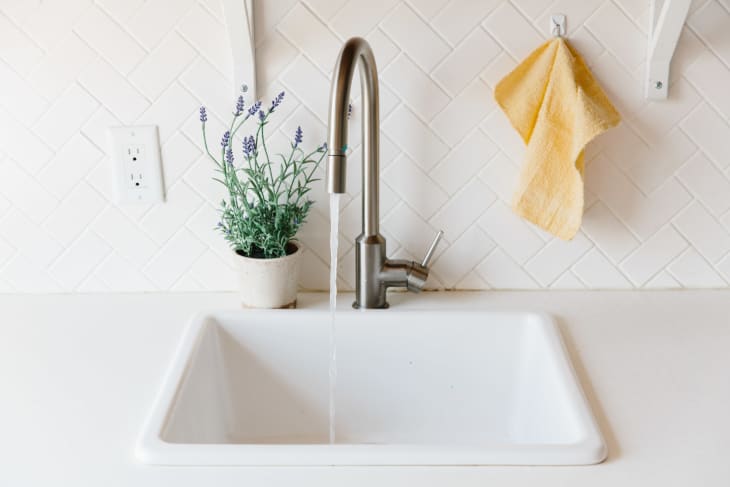How To Make Your Own Drain Cleaner
Dead skin cells, soap scum, random food scraps, human hair, pet hair, and just regular ol’ dirt — these are all the things you regularly wash down your sink or tub’s drain. And if they sound gross now, image how much worse they are once they’ve congealed into a stringy, slimy ball of gunk inside your pipes. Yuck!
You want to prevent any of this gunk buildup before it becomes a real problem — especially in homes with older pipes or large families. The first sign of a growing clog? A gray ring around your tub or sink from the water sloooooowly draining, giving soap bubbles ample time to attach and dry to that formerly clean porcelain. Another sign is water pooling around the drain. If you can actually see the slow drainage, it’s time to act!
There are strong chemical cleaners designed to tackle truly clogged drains (and boy, do they smell like they’re working!), but for prevention and regular maintenance, a DIY unclogger (a professional term!) will do. This method combines a couple products — with surprising cleaning powers — that you already have in your cabinets.
How To Make Your Own Drain Cleaner
Ingredients
- Boiling-hot water
- Baking soda (about a cup)
- Fresh-squeezed lemon juice (about a cup)
Equipment
- Spoon or funnel (optional)
- Tub stopper or rag
Instructions
- Run the hot water: Turn your sink or shower on at full-blast hot and run it for a few minutes, then allow it to drain. If your water doesn’t get super hot (which it might not, because the EPA recommends you keep it at 120 degrees for both energy efficiency and safety), boil a big pot of water on the stove, then pour it down the drain. Wait for the water to drain; this is the first step in loosening the gunk.
- Pour in the baking soda: Slowly send about a cup of baking soda down the drain, using a spoon or funnel as necessary. Do it little by little so it’s not all jammed at the top of the drain.
- Add the lemon juice: Slowly pour the lemon juice on top of the baking soda. Brace yourself for some action: This will cause a fizzy, bubbly chemical reaction.
- Cover and wait: Use your tub stopper or a rag to cover the drain, and wait. Give the mixture enough time to work, about a half hour, and keep it covered the whole time.
- Run water again: Uncover the drain and send piping-hot water down it (again, either from the faucet or heated on the stovetop), letting it run for a few minutes. Wait for it all to drain. Is it draining faster than before? If not …
- Repeat as necessary: If your drain is super clogged, it may take a few rounds before it clears up. But with proper maintenance (repeat this process two to four times a year, depending on your household) you can prevent those big clogs from building up again.
